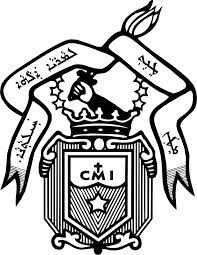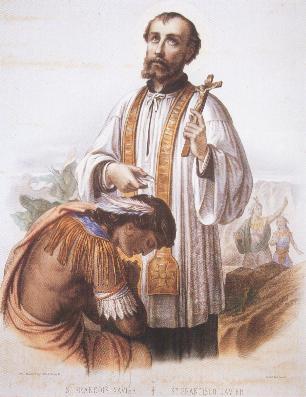
The Syro-Malankara Catholic Church, also known as the Malankara Syrian Catholic Church, is an Eastern Catholic sui iuris particular church in full communion with the worldwide Catholic Church possessing self-governance under the Code of Canons of the Eastern Churches. It is one of the major archiepiscopal churches of the Catholic Church. It is headed by Major Archbishop Baselios Cardinal Cleemis Catholicos of the Major Archdiocese of Trivandrum based in Kerala, India. With more than 1096 parishes, its one of India's biggest church evangelical establishments.

The Syro-Malabar Church, also known as the Syro-Malabar Catholic Church, is an Eastern Catholic Church based in Kerala, India. It is a sui iuris (autonomous) particular Church in full communion with the Pope and the worldwide Catholic Church, including the Latin Church and the 22 other Eastern Catholic Churches, with self-governance under the Code of Canons of the Eastern Churches (CCEO). The Church is headed by the Major Archbishop of the Syro-Malabar, Raphael Thattil. The Syro-Malabar Synod of Bishops canonically convoked and presided over by the Major Archbishop constitutes the supreme authority of the Church. The Major Archiepiscopal Curia of the Church is based in Kakkanad, Kochi. Syro-Malabar is a prefix reflecting the church's use of the East Syriac Rite liturgy and origins in Malabar. The name has been in usage in official Vatican documents since the nineteenth century.

The Major Archeparchy of Ernakulam–Angamaly is the major archeparchy and the see of the Major Archbishop of the Syro-Malabar Catholic Church. It has been the major archeparchy since 1992 when the Syro-Malabar Catholic Church was elevated to the status of a major archiepiscopal church with Ernakulam-Angamaly as the primatal see. The major archbishop of Ernakulam-Angamaly is the main bishop of the jurisdiction, at the same time the head of the Syro-Malabar Catholic Church. The eparchies of Kothamangalam and Idukki are the two suffragan eparchies of the major archeparchy.

Vithura, also known as the Hill City Of Trivandrum, is located 36 km from Thiruvananthapuram capital of the Kerala state in India. Vithura is the culmination of the crossroads to many tourist, cultural, and religious centres. Surrounded by the Western Ghats (Sahyadris), Vithura is a tourist spot. The village has a good climate year-round. The Indian Institute of Science Education and Research, Thiruvananthapuram campus is situated here.

The Carmelites of Mary Immaculate abbreviated CMI, formerly also known as the Servants of Mary Immaculate, is a Catholic clerical religious congregation of pontifical right for men of the Syro-Malabar Catholic Church, and is the largest such congregation in the Syro-Malabar Church.

The Syro-Malabar Catholic Archeparchy of Kottayam is a metropolitan Archeparchy of the Syro-Malabar Catholic Church in India. The Archeparchy is exclusively for Knanaya faithful who are the descendants of Syriac Judeo-Christians who migrated from South Mesopotamia to Kodungallur (Muziris) in South India in 4th century.

The Syro-Malabar Catholic Eparchy (Diocese) of Sagar is an eparchy in central India, which is part of the Syro-Malabar Catholic Church, yet is a suffragan in the ecclesiastical province of the Latin Catholic rite Metropolitan of the Roman Archdiocese of Bhopal. It was created in 1968 as (missionary) and promoted diocese in 1977 by the papal bull Divina Verba of Pope Paul VI.

The Syro-Malabar Catholic Eparchy of Irinjalakuda-Kodungallur is a suffragan eparchy in the ecclesiastical province of the Metropolitan Syro-Malabar Catholic Archeparchy of Thrissur in Kerala state's Thrissur District, southern India.It is part of the Syro-Malabar Catholic Church.

This article lists the various old and ancient churches that exist among the Saint Thomas Christians in Kerala.
Malabar Migration refers to the large-scale migration of Saint Thomas Christians who existed in Southern and Central Kerala for most of its history to Northern Kerala (Malabar) in the 20th century.

Christianity in the state of Tamil Nadu, India is the second largest religion in the state. According to tradition, St. Thomas, one of the twelve apostles, landed in Malabar Coast in AD 52. In the colonial age many Portuguese, Dutch, British and Italian Christians came to Tamil Nadu. Priests accompanied them not only to minister the colonisers but also to spread the Christian faith among the non-Christians in Tamil Nadu. Currently, Christians are a minority community comprising 6% of the total population. Christians are mainly concentrated in the southern districts of Tamil Nadu - Kanyakumari, Thoothukudi and Tirunelveli.

St Mary's Church is a Syro-Malabar parish church in Cheloor/Edathirinji, Kerala, India. The church follows leadership by Syro-Malabar Catholic Church under Syro-Malabar Catholic Diocese of Irinjalakuda.

Champakulam Kalloorkadu St. Mary's Basilica is an ancient Christian Church in Kerala. It belongs to the Syro-Malabar Church under the Archeparchy of Changanacherry. It is a Forane church, with several parishes under it.

St. George Forane Church Kallody is situated in Mananthavady taluk of Wayanad district. It is one of the important churches and pilgrim centers in the region, in communion with the Syro-Malabar Catholic Church.
St. Joseph Church, Aloor is a parish of the Syro-Malabar Catholic Church in Aloor. It was the first parish church in Aloor Muri of the Mukundapuram and Kodassery taluks. Aloor parish is one of the 83 parishes between the Bharathappuzha and Periyar rivers, during the erection of syro-Malabar hierarchy and Trichur Vicariate.

Christianity in Kanyakumari district is its second largest religion. The Catholic Church has about 500,000 followers, while the Protestant groups have about 400,000 members.

The Latin Catholics of Malabar Coast, aka Latin Christians of Kerala or Malabar Latin Catholics are a multi-ethnic religious group who constitute the ecclesiastical provinces of Verapoly and Trivandrum, which follow the Roman Rite liturgical practices of the Latin Church, on the Malabar Coast, the southwestern coast of India. They are predominantly Malayali people and speak the Malayalam language, though a subgroup of Luso-Indians speaks the Cochin Portuguese Creole. They trace their origins to the evangelization of Malabar Coast by the Dominican, Franciscan, Jesuit and Carmelite missionaries, mainly French and Portuguese.
The Eastern Catholic Churches of the Catholic Church utilize liturgies originating in Eastern Christianity, distinguishing them from the majority of Catholic liturgies which are celebrated according to the Latin liturgical rites of the Latin Church. While some of these sui iuris churches use the same liturgical ritual families as other Eastern Catholic churches and Eastern churches not in full communion with Rome, each church retains the right to institute its own canonical norms, liturgical books, and practices for the ritual celebration of the Eucharist, other sacraments, and canonical hours.
















